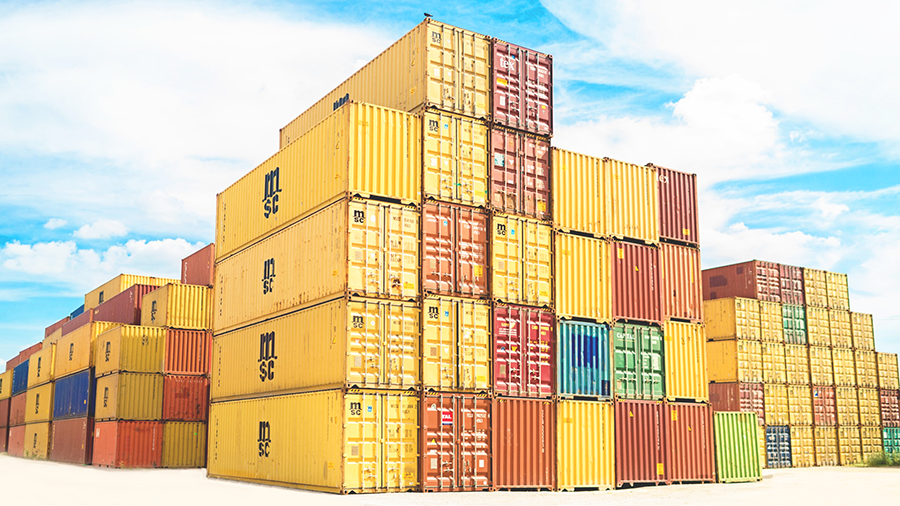|
For many ecommerce store owners, shipping is an afterthought. They work hard to develop a good product, build a website and a brand, and attract loyal customers in the process. What they forget is that the last piece of the equation — shipping — is a major determinant in a shopper’s final purchase decision. In the age of Amazon, consumers expect shipping options, or, at the very least, transparency if they’re lacking. So it’s important to remember that your store, no matter how small, is competing with online retail giants. Offering free or expedited shipping is a great perk, but being clear about your shipping and delivery policy is non-negotiable. In order to get more sales and better reviews, your shipping policy should clearly answer these 5 questions. 1. When will I receive my order? This should be the spirit of your shipping and delivery policy: clarity and transparency are paramount. And make sure you don’t promise your customers what you cannot deliver. Be very clear about your shipping timelines. And, if anything, err on the conservative side. It’s okay if a package arrives at your customer’s shipping address early. More than okay, in fact, it’s a delight. But if a package arrives after the delivery timeline outlined in your store’s shipping policy, you’re in trouble. Late deliveries are one of the main reasons companies get blacklisted: studies show that 69% of consumers won’t do business with a store again after a package is delivered late. And while everyone appreciates expedited shipping, most customers are perfectly willing to wait a reasonable amount of time for the products they want or need. You just need to be straightforward about exactly what that timeline looks like. 2. Where do you ship? International shipping options? Even before you make your first sale, you’ll need to decide where your business will ship to. Starting out, that might only be domestic locations. But eventually, you may decide to adopt an international shipping strategy — and for good reason. Every second, 11 people across the globe are becoming first-time internet users, which has resulted in global ecommerce spend rising consistently at 14% per year. So there is a huge (and growing) pool of international consumers to sell to should you decide to start offering international shipping. On the home front, however, shipping is broken into 8 geographical areas, or zones. One factor in the cost of shipping is the distance from a package’s origin to the zone of its final destination. UPS offers ground shipping maps for your location that will help you to be able to give your customers the best estimate of shipping time. 3. What are your shipping costs? Your shipping costs will be calculated based on the dimensional weight of your packages. Dimensional weight is typically measured by multiplying the length x width x height of the package you use to ship a product. Most carriers, including WooCommerce UPS shipping, will charge the greater value of either the weight of a package or its DIM. Your shipping costs will still vary based on your shipping strategy, of which there are generally three options:
Whichever strategy you choose, make sure to be clear about your shipping costs in your shipping and delivery policy. And for savings of up to 90% on shipping rates, consider using the WooCommerce shipping plugin. 4. How can I track my order? If you’re shipping your own products, i.e. not using a warehouse, then you’ll need to develop a method for keeping your customers updated on the status of their orders. Your shipping policy should spell out the order tracking process. They’ll need to be notified when their orders ship, where they are in transit, and when they arrive. For WooCommerce store owners picking and packing their own orders, consider using a WooCommerce shipping tracking plugin. Check out this popular one by Shiprocket. All you’ll need to provide are the names of your shipping carriers and their tracking URLs. Then the easy-to-use interface of a WooCommerce shipping plugin will take over the process and keep your customers updated on everything they need to know. 5. How can I cancel or return my order? Cancellations are an unfortunate reality of online retail. Hopefully, their occurrences are few and far between, but it’s important to have a clearly defined order cancellation policy spelled out within your shipping policy. And, over the long run, you can take heart that a liberal order cancellation policy will build trust with your customers and benefit your bottom line. WooCommerce shipping plugins, like this one, allow you to manually accept or decline a customer's request to cancel an order. If a customer’s cancellation request meets your shipping policy’s criteria, you’ll be able to reverse the order immediately. Starting an ecommerce business comes with many obstacles, like creating a robust shipping and delivery policy. And that’s to say nothing of actually marketing your products once your store is up and running. Fortunately for you, ecommerce marketing is the business of Kliken. We make the process of syncing your store with the Google Shopping & Ads platforms easy. So you can start running Google Ads campaigns targeted at your niche's audience almost immediately — we'll deal with the onboarding headaches. As the world’s #1 Shopping and Ads marketing platform, Kliken has helped over 1,000,000 small businesses worldwide grow their sales on Google and get a return of up to 7x their original ad spend. Its proven marketing solutions can help you to unleash the potential of your ecommerce store. Learn more about how customers use Kliken to grow their businesses online here. Author: Michael ArnoldMichael is a freelancer from New York City. When he isn’t writing about how Kliken unleashes the marketing, you can find him reading, writing for pleasure, or traveling the globe.
0 Comments
Your comment will be posted after it is approved.
Leave a Reply. |











